Contents
Preface to the Second Edition
Preface to the First Edition
1. Introduction
1.1 Parsing as a Craft
1.2 The Approach Used
1.3 Outline of the Contents
1.4 The Annotated Bibliography
2. Grammars as a Generating Device
2.1 Languages as Infinite Sets
2.1.1 Language
2.1.2 Grammars
2.1.3 Problems with Infinite Sets
2.1.4 Describing a Language through a Finite Recipe
2.2 Formal Grammars
2.2.1 The Formalism of Formal Grammars
2.2.2 Generating Sentences from a Formal Grammar
2.2.3 The Expressive Power of Formal Grammars
2.3 The Chomsky Hierarchy of Grammars and Languages
2.3.1 Type 1 Grammars
2.3.2 Type 2 Grammars
2.3.3 Type 3 Grammars
2.3.4 Type 4 Grammars
2.3.5 Conclusion
2.4 Actually Generating Sentences froma Grammar
2.4.1 The Phrase-Structure Case
2.4.2 The CS Case
2.4.3 The CF Case
2.5 To Shrink or Not To Shrink
2.6 Grammars that Produce the Empty Language
2.7 The Limitations of CF and FS Grammars
2.7.1 The uvwxy Theorem
2.7.2 The uvw Theorem
2.8 CF and FS Grammars as Transition Graphs
2.9 Hygiene in Context-Free Grammars
2.9.1 Undefined Non-Terminals
2.9.2 Unreachable Non-Terminals
2.9.3 Non-Productive Rules and Non-Terminals
2.9.4 Loops
2.9.5 Cleaning up a Context-Free Grammar
2.10 Set Properties of Context-Free and Regular Languages
2.11 The Semantic Connection
2.11.1 Attribute Grammars
2.11.2 Transduction Grammars
2.11.3 Augmented Transition Networks
2.12 A Metaphorical Comparison of Grammar Types
2.13 Conclusion
3. Introduction to Parsing
3.1 The Parse Tree
3.1.1 The Size of a Parse Tree
3.1.2 Various Kinds of Ambiguity
3.1.3 Linearization of the Parse Tree
3.2 Two Ways to Parse a Sentence
3.2.1 Top-Down Parsing
3.2.2 Bottom-Up Parsing
3.2.3 Applicability
3.3 Non-Deterministic Automata
3.3.1 Constructing the NDA
3.3.2 Constructing the Control Mechanism
3.4 Recognition and Parsing for Type 0 to Type 4 Grammars
3.4.1 Time Requirements
3.4.2 Type 0 and Type 1 Grammars
3.4.3 Type 2 Grammars
3.4.4 Type 3 Grammars
3.4.5 Type 4 Grammars
3.5 An Overview of Context-Free Parsing Methods
3.5.1 Directionality
3.5.2 Search Techniques
3.5.3 General Directional Methods
3.5.4 Linear Methods
3.5.5 Deterministic Top-Down and Bottom-Up Methods
3.5.6 Non-Canonical Methods
3.5.7 Generalized Linear Methods
3.5.8 Conclusion
3.6 The "Strength" of a Parsing Technique
3.7 Representations of Parse Trees
3.7.1 Parse Trees in the Producer-Consumer Model
3.7.2 Parse Trees in the Data Structure Model
3.7.3 Parse Forests
3.7.4 Parse-Forest Grammars
3.8 When are we done Parsing?
3.9 Transitive Closure
3.10 The Relation between Parsing and Boolean Matrix Multiplication
3.11 Conclusion
4. General Non-Directional Parsing
4.1 Unger's Parsing Method
4.1.1 Unger's Method without ε-Rules or Loops
4.1.2 Unger's Method with ε-Rules
4.1.3 Getting Parse-Forest Grammars from Unger Parsing
4.2 The CYK Parsing Method
4.2.1 CYK Recognition with General CF Grammars
4.2.2 CYK Recognition with a Grammar in Chomsky Normal Form
4.2.3 Transforming a CF Grammar into Chomsky Normal Form
4.2.4 The Example Revisited
4.2.5 CYK Parsing with Chomsky Normal Form
4.2.6 Undoing the Effect of the CNF Transformation
4.2.7 A Short Retrospective of CYK
4.2.8 Getting Parse-Forest Grammars from CYK Parsing
4.3 Tabular Parsing
4.3.1 Top-Down Tabular Parsing
4.3.2 Bottom-Up Tabular Parsing
4.4 Conclusion
5. Regular Grammars and Finite-State Automata
5.1 Applications of Regular Grammars
5.1.1 Regular Languages in CF Parsing
5.1.2 Systems with Finite Memory
5.1.3 Pattern Searching
5.1.4 SGML and XML Validation
5.2 Producing from a Regular Grammar
5.3 Parsing with a Regular Grammar
5.3.1 Replacing Sets by States
5.3.2 ε-Transitions and Non-Standard Notation
5.4 Manipulating Regular Grammars and Regular Expressions
5.4.1 Regular Grammars from Regular Expressions
5.4.2 Regular Expressions from Regular Grammars
5.5 Manipulating Regular Languages
5.6 Left-Regular Grammars
5.7 Minimizing Finite-State Automata
5.8 Top-Down Regular Expression Recognition
5.8.1 The Recognizer
5.8.2 Evaluation
5.9 Semantics in FS Systems
5.10 Fast Text Search Using Finite-State Automata
5.11 Conclusion
6. General Directional Top-Down Parsing
6.1 Imitating Leftmost Derivations
6.2 The Pushdown Automaton
6.3 Breadth-First Top-Down Parsing
6.3.1 An Example
6.3.2 A Counterexample: Left Recursion
6.4 Eliminating Left Recursion
6.5 Depth-First (Backtracking) Parsers
6.6 Recursive Descent
6.6.1 A Naive Approach
6.6.2 Exhaustive Backtracking Recursive Descent
6.6.3 Breadth-First Recursive Descent
6.7 Definite Clause Grammars
6.7.1 Prolog
6.7.2 The DCG Format
6.7.3 Getting Parse Tree Information
6.7.4 Running Definite Clause Grammar Programs
6.8 Cancellation Parsing
6.8.1 Cancellation Sets
6.8.2 The Transformation Scheme
6.8.3 Cancellation Parsing with ε-Rules
6.9 Conclusion
7. General Directional Bottom-Up Parsing
7.1 Parsing by Searching
7.1.1 Depth-First (Backtracking) Parsing
7.1.2 Breadth-First (On-Line) Parsing
7.1.3 A Combined Representation
7.1.4 A Slightly More Realistic Example
7.2 The Earley Parser
7.2.1 The Basic Earley Parser
7.2.2 The Relation between the Earley and CYK Algorithms
7.2.3 Handling ε-Rules
7.2.4 Exploiting Look-Ahead
7.2.5 Left and Right Recursion
7.3 Chart Parsing
7.3.1 Inference Rules
7.3.2 A Transitive Closure Algorithm
7.3.3 Completion
7.3.4 Bottom-Up (Actually Left-Corner)
7.3.5 The Agenda
7.3.6 Top-Down
7.3.7 Conclusion
7.4 Conclusion
8. Deterministic Top-Down Parsing
8.1 Replacing Search by Table Look-Up
8.2 LL(1) Parsing
8.2.1 LL(1) Parsing without ε-Rules
8.2.2 LL(1) Parsing with ε-Rules
8.2.3 LL(1) versus Strong-LL(1)
8.2.4 Full LL(1) Parsing
8.2.5 Solving LL(1) Conflicts
8.2.6 LL(1) and Recursive Descent
8.3 Increasing the Power of Deterministic LL Parsing
8.3.1 LL(k) Grammars
8.3.2 Linear-Approximate LL(k)
8.3.3 LL-Regular
8.4 Getting a Parse Tree Grammar from LL(1) Parsing
8.5 Extended LL(1) Grammars
8.6 Conclusion
9. Deterministic Bottom-Up Parsing
9.1 Simple Handle-Finding Techniques
9.2 Precedence Parsing
9.2.1 Parenthesis Generators
9.2.2 Constructing the Operator-Precedence Table
9.2.3 Precedence Functions
9.2.4 Further Precedence Methods
9.3 Bounded-Right-Context Parsing
9.3.1 Bounded-Context Techniques
9.3.2 Floyd Productions
9.4 LR Methods
9.5 LR(0)
9.5.1 The LR(0) Automaton
9.5.2 Using the LR(0) Automaton
9.5.3 LR(0) Conflicts
9.5.4 ε-LR(0) Parsing
9.5.5 Practical LR Parse Table Construction
9.6 LR(1)
9.6.1 LR(1) with ε-Rules
9.6.2 LR(k > 1) Parsing
9.6.3 Some Properties of LR(k) Parsing
9.7 LALR(1)
9.7.1 Constructing the LALR(1) Parsing Tables
9.7.2 Identifying LALR(1) Conflicts
9.8 SLR(1)
9.9 Conflict Resolvers
9.10 Further Developments of LR Methods
9.10.1 Elimination of Unit Rules
9.10.2 Reducing the Stack Activity
9.10.3 Regular Right Part Grammars
9.10.4 Incremental Parsing
9.10.5 Incremental Parser Generation
9.10.6 Recursive Ascent
9.10.7 Regular Expressions of LR Languages
9.11 Getting a Parse Tree Grammar from LR Parsing
9.12 Left and Right Contexts of Parsing Decisions
9.12.1 The Left Context of a State
9.12.2 The Right Context of an Item
9.13 Exploiting the Left and Right Contexts
9.13.1 Discriminating-Reverse (DR) Parsing
9.13.2 LR-Regular
9.13.3 LAR(m) Parsing
9.14 LR(k) as an Ambiguity Test
9.15 Conclusion
10. Non-Canonical Parsers
10.1 Top-Down Non-Canonical Parsing
10.1.1 Left-Corner Parsing
10.1.2 Deterministic Cancellation Parsing
10.1.3 Partitioned LL
10.1.4 Discussion
10.2 Bottom-Up Non-Canonical Parsing
10.2.1 Total Precedence
10.2.2 NSLR(1)
10.2.3 LR(k,∞)
10.2.4 Partitioned LR
10.3 General Non-Canonical Parsing
10.4 Conclusion
11. Generalized Deterministic Parsers
11.1 Generalized LR Parsing
11.1.1 The Basic GLR Parsing Algorithm
11.1.2 Necessary Optimizations
11.1.3 Hidden Left Recursion and Loops
11.1.4 Extensions and Improvements
11.2 Generalized LL Parsing
11.2.1 Simple Generalized LL Parsing
11.2.2 Generalized LL Parsing with Left-Recursion
11.2.3 Generalized LL Parsing with ε-Rules
11.2.4 Generalized Cancellation and LC Parsing
11.3 Conclusion
12. Substring Parsing
12.1 The Suffix Grammar
12.2 General (Non-Linear) Methods
12.2.1 A Non-Directional Method
12.2.2 A Directional Method
12.3 Linear-Time Methods for LL and LR Grammars
12.3.1 Linear-Time Suffix Parsing for LL(1) Grammars
12.3.2 Linear-Time Suffix Parsing for LR(1) Grammars
12.3.3 Tabular Methods
12.3.4 Discussion
12.4 Conclusion
13. Parsing as Intersection
13.1 The Intersection Algorithm
13.1.1 The Rule Sets I[sub(rules)], I[sub(rough)], and I
13.1.2 The Languages of [sub(rules)], I[sub(rough)], and I
13.1.3 An Example: Parsing Arithmetic Expressions
13.2 The Parsing of FSAs
13.2.1 Unknown Tokens
13.2.2 Substring Parsing by Intersection
13.2.3 Filtering
13.3 Time and Space Requirements
13.4 Reducing the Intermediate Size: Earley's Algorithm on FSAs
13.5 Error Handling Using Intersection Parsing
13.6 Conclusion
14. Parallel Parsing
14.1 The Reasons for Parallel Parsing
14.2 Multiple Serial Parsers
14.3 Process-Configuration Parsers
14.3.1 A Parallel Bottom-up GLR Parser
14.3.2 Some Other Process-Configuration Parsers
14.4 Connectionist Parsers
14.4.1 Boolean Circuits
14.4.2 A CYK Recognizer on a Boolean Circuit
14.4.3 Rytter's Algorithm
14.5 Conclusion
15. Non-Chomsky Grammars and Their Parsers
15.1 The Unsuitability of Context-Sensitive Grammars
15.1.1 Understanding Context-Sensitive Grammars
15.1.2 Parsing with Context-Sensitive Grammars
15.1.3 Expressing Semantics in Context-Sensitive Grammars
15.1.4 Error Handling in Context-Sensitive Grammars
15.1.5 Alternatives
15.2 Two-Level Grammars
15.2.1 VW Grammars
15.2.2 Expressing Semantics in a VW Grammar
15.2.3 Parsing with VW Grammars
15.2.4 Error Handling in VW Grammars
15.2.5 Infinite Symbol Sets
15.3 Attribute and Affix Grammars
15.3.1 Attribute Grammars
15.3.2 Affix Grammars
15.4 Tree-Adjoining Grammars
15.4.1 Cross-Dependencies
15.4.2 Parsing with TAGs
15.5 Coupled Grammars
15.5.1 Parsing with Coupled Grammars
15.6 Ordered Grammars
15.6.1 Rule Ordering by Control Grammar
15.6.2 Parsing with Rule-Ordered Grammars
15.6.3 Marked Ordered Grammars
15.6.4 Parsing with Marked Ordered Grammars
15.7 Recognition Systems
15.7.1 Properties of a Recognition System
15.7.2 Implementing a Recognition System
15.7.3 Parsing with Recognition Systems
15.7.4 Expressing Semantics in Recognition Systems
15.7.5 Error Handling in Recognition Systems
15.8 Boolean Grammars
15.8.1 Expressing Context Checks in Boolean Grammars
15.8.2 Parsing with Boolean Grammars
15.8.3 §-Calculus
15.9 Conclusion
16. Error Handling
16.1 Detection versus Recovery versus Correction
16.2 Parsing Techniques and Error Detection
16.2.1 Error Detection in Non-Directional Parsing Methods
16.2.2 Error Detection in Finite-State Automata
16.2.3 Error Detection in General Directional Top-Down Parsers
16.2.4 Error Detection in General Directional Bottom-Up Parsers
16.2.5 Error Detection in Deterministic Top-Down Parsers
16.2.6 Error Detection in Deterministic Bottom-Up Parsers
16.3 Recovering from Errors
16.4 Global Error Handling
16.5 Regional Error Handling
16.5.1 Backward/Forward Move Error Recovery
16.5.2 Error Recovery with Bounded-Context Grammars
16.6 Local Error Handling
16.6.1 Panic Mode
16.6.2 FOLLOW-Set Error Recovery
16.6.3 Acceptable-Sets Derived from Continuations
16.6.4 Insertion-Only Error Correction
16.6.5 Locally Least-Cost Error Recovery
16.7 Non-Correcting Error Recovery
16.7.1 Detection and Recovery
16.7.2 Locating the Error
16.8 Ad Hoc Methods
16.8.1 Error Productions
16.8.2 Empty Table Slots
16.8.3 Error Tokens
16.9 Conclusion
17. Practical Parser Writing and Usage
17.1 A Comparative Survey
17.1.1 Considerations
17.1.2 General Parsers
17.1.3 General Substring Parsers
17.1.4 Linear-Time Parsers
17.1.5 Linear-Time Substring Parsers
17.1.6 Obtaining and Using a Parser Generator
17.2 Parser Construction
17.2.1 Interpretive, Table-Based, and Compiled Parsers
17.2.2 Parsing Methods and Implementations
17.3 A Simple General Context-Free Parser
17.3.1 Principles of the Parser
17.3.2 The Program
17.3.3 Handling Left Recursion
17.3.4 Parsing in Polynomial Time
17.4 Programming Language Paradigms
17.4.1 Imperative and Object-Oriented Programming
17.4.2 Functional Programming
17.4.3 Logic Programming
17.5 Alternative Uses of Parsing
17.5.1 Data Compression
17.5.2 Machine Code Generation
17.5.3 Support of Logic Languages
17.6 Conclusion
18. Annotated Bibliography
18.1 Major Parsing Subjects
18.1.1 Unrestricted PS and CS Grammars
18.1.2 General Context-Free Parsing
18.1.3 LL Parsing
18.1.4 LR Parsing
18.1.5 Left-Corner Parsing
18.1.6 Precedence and Bounded-Right-Context Parsing
18.1.7 Finite-State Automata
18.1.8 General Books and Papers on Parsing
18.2 Advanced Parsing Subjects
18.2.1 Generalized Deterministic Parsing
18.2.2 Non-Canonical Parsing
18.2.3 Substring Parsing
18.2.4 Parsing as Intersection
18.2.5 Parallel Parsing Techniques
18.2.6 Non-Chomsky Systems
18.2.7 Error Handling
18.2.8 Incremental Parsing
18.3 Parsers and Applications
18.3.1 Parser Writing
18.3.2 Parser-Generating Systems
18.3.3 Applications
18.3.4 Parsing and Deduction
18.3.5 Parsing Issues in Natural Language Handling
18.4 Support Material
18.4.1 Formal Languages
18.4.2 Approximation Techniques
18.4.3 Transformations on Grammars
18.4.4 Miscellaneous Literature
A. Hints and Solutions to Selected Problems
Author Index
A
B
C
D
E
F
G
H
I
J
K
L
M
N
O
P
Q
R
S
T
U
V
W
Y
Z
Subject Index
A
B
C
D
E
F
G
H
I
J
K
L
M
N
O
P
Q
R
S
T
U
V
W
X
Y
Z
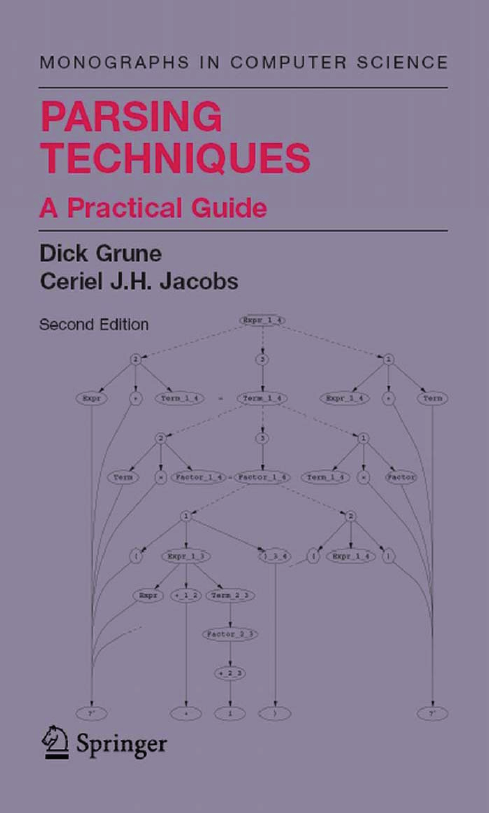
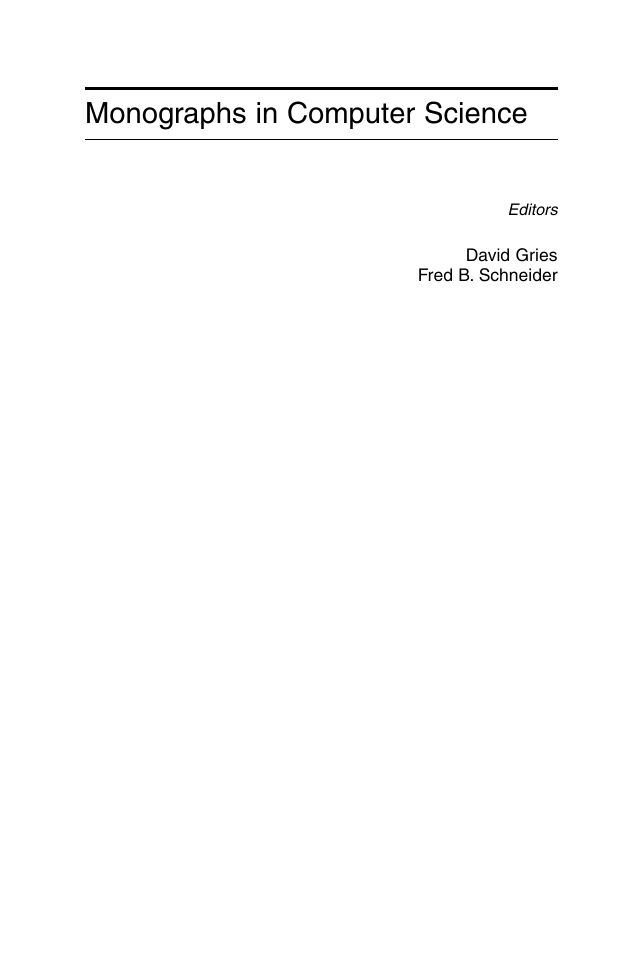
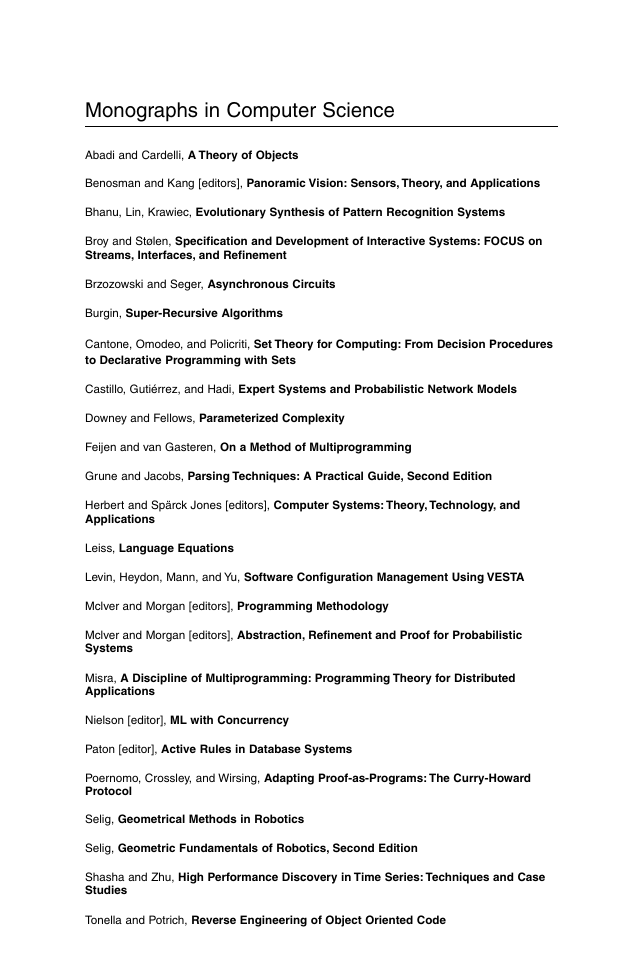
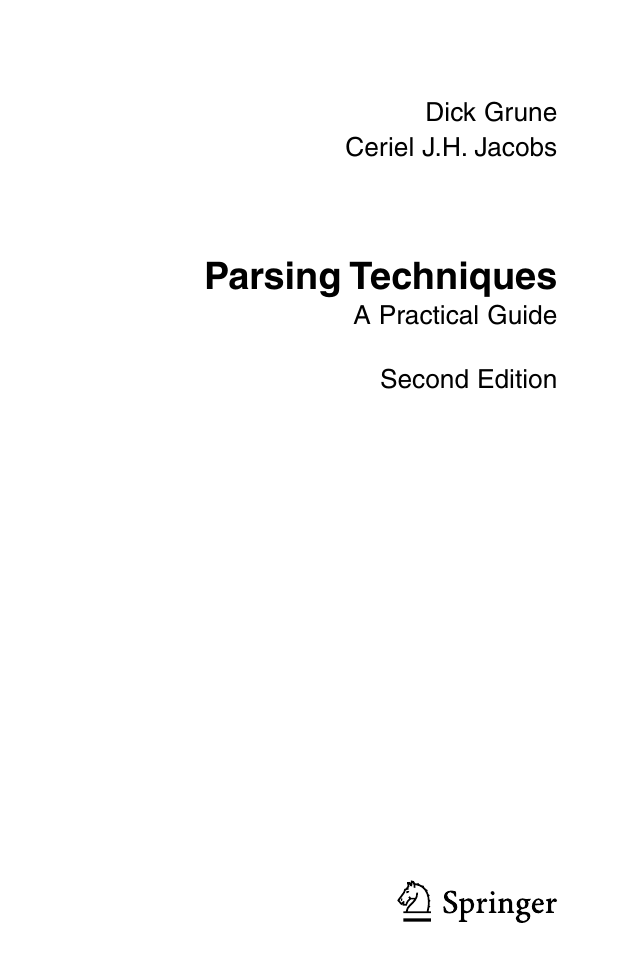
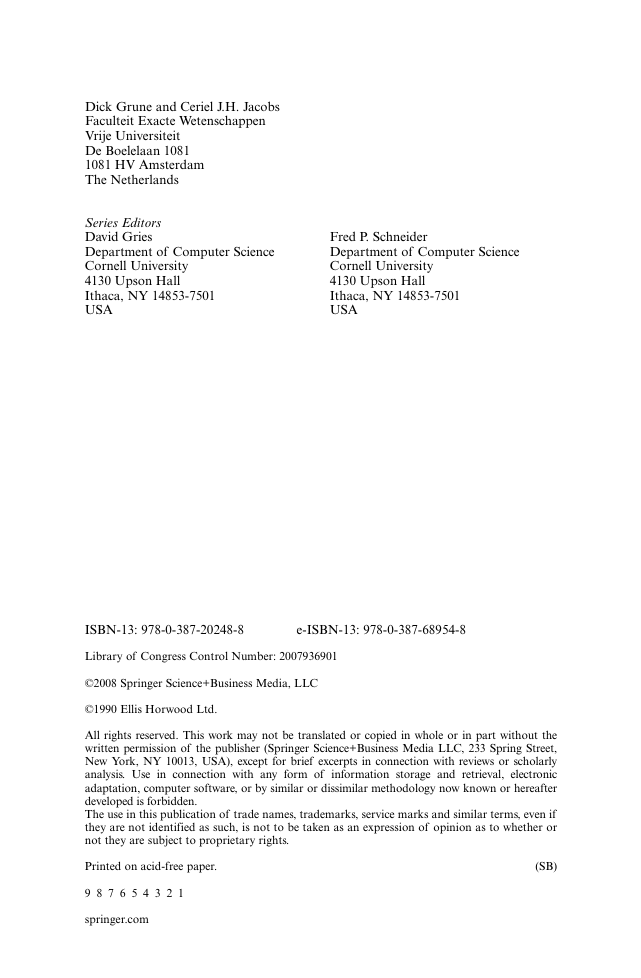
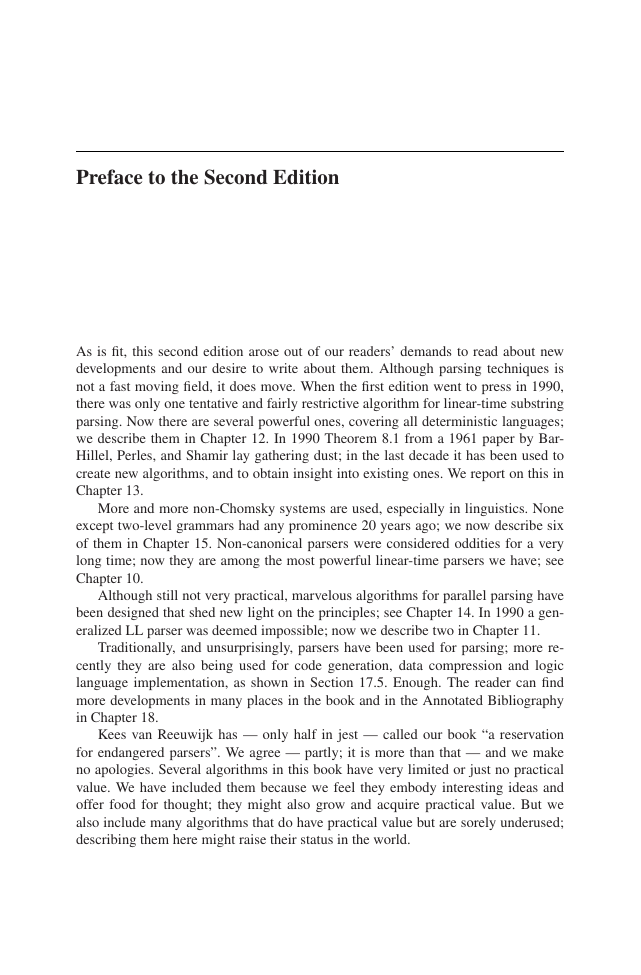
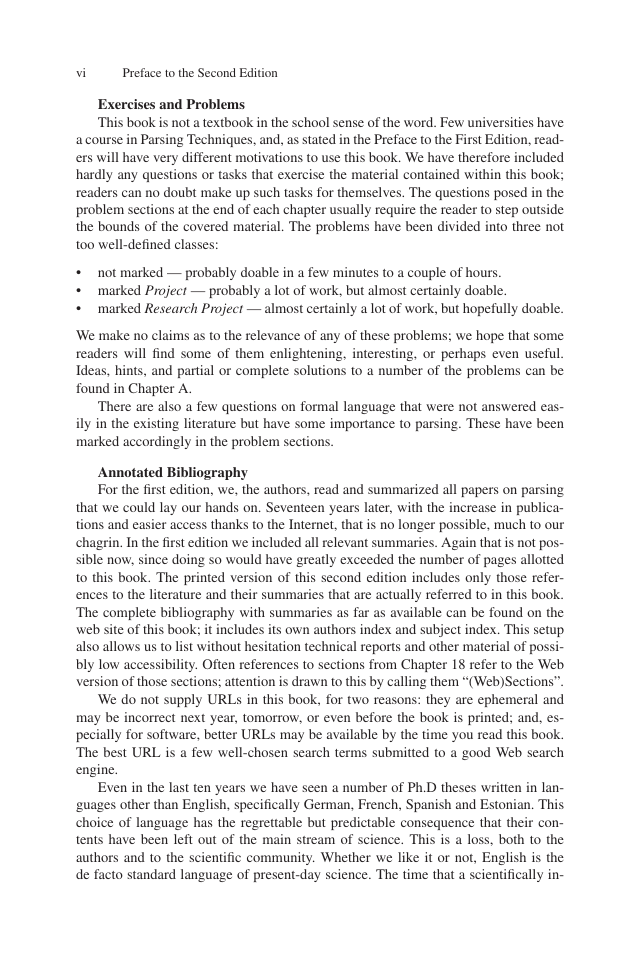
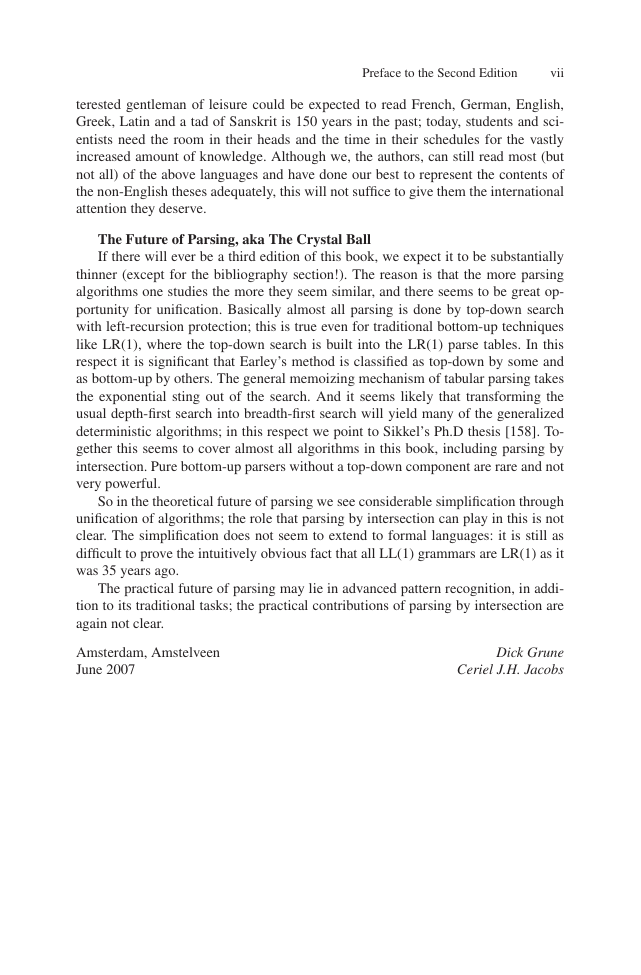








 2023年江西萍乡中考道德与法治真题及答案.doc
2023年江西萍乡中考道德与法治真题及答案.doc 2012年重庆南川中考生物真题及答案.doc
2012年重庆南川中考生物真题及答案.doc 2013年江西师范大学地理学综合及文艺理论基础考研真题.doc
2013年江西师范大学地理学综合及文艺理论基础考研真题.doc 2020年四川甘孜小升初语文真题及答案I卷.doc
2020年四川甘孜小升初语文真题及答案I卷.doc 2020年注册岩土工程师专业基础考试真题及答案.doc
2020年注册岩土工程师专业基础考试真题及答案.doc 2023-2024学年福建省厦门市九年级上学期数学月考试题及答案.doc
2023-2024学年福建省厦门市九年级上学期数学月考试题及答案.doc 2021-2022学年辽宁省沈阳市大东区九年级上学期语文期末试题及答案.doc
2021-2022学年辽宁省沈阳市大东区九年级上学期语文期末试题及答案.doc 2022-2023学年北京东城区初三第一学期物理期末试卷及答案.doc
2022-2023学年北京东城区初三第一学期物理期末试卷及答案.doc 2018上半年江西教师资格初中地理学科知识与教学能力真题及答案.doc
2018上半年江西教师资格初中地理学科知识与教学能力真题及答案.doc 2012年河北国家公务员申论考试真题及答案-省级.doc
2012年河北国家公务员申论考试真题及答案-省级.doc 2020-2021学年江苏省扬州市江都区邵樊片九年级上学期数学第一次质量检测试题及答案.doc
2020-2021学年江苏省扬州市江都区邵樊片九年级上学期数学第一次质量检测试题及答案.doc 2022下半年黑龙江教师资格证中学综合素质真题及答案.doc
2022下半年黑龙江教师资格证中学综合素质真题及答案.doc